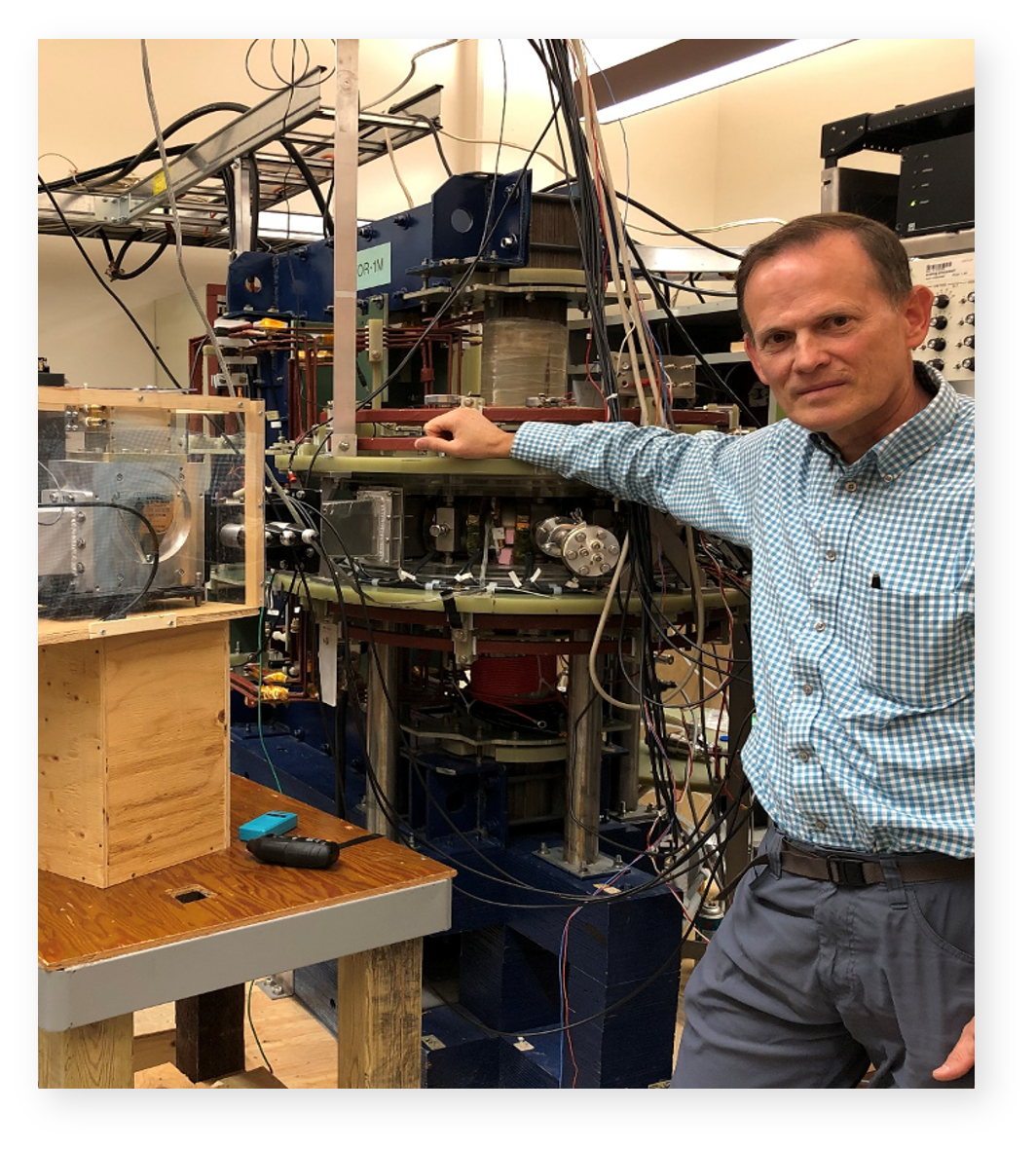Ion-Mode Plasma Containment
USU researchers have developed a novel method of containing plasma within magnetic fields. This method makes nuclear fusion power feasible on a small scale by containing plasma in a “minimum-total-energy" state.
Problem
Fusion power has been identified as a possible solution to the energy crisis. Nuclear fusion can be achieved by heating plasma (gas that is ionized by detaching an electron from its atoms) up to about 150 million degrees. Because no physical container on Earth can withstand these temperatures, a magnetic field is typically used to contain the plasma. Confinement times for existing methods are limited because plasma instabilities arise that destroy confinement. To increase this time, the tokamak (for example) is made increasingly larger and thus more expensive. The ITER tokamak is expected to give a positive net energy output, however the enormous cost of ITER disqualifies it as an economical source of energy.
Solution
The primary characteristic of the proposed magnetic-confinement device is that the plasma is confined in a minimum-total-energy equilibrium. One consequence of this new state is that avoiding destructive instabilities requires the machine to be smaller, rather than larger, making its cost per unit energy, inherently less expensive. Coils and electrons and ion currents in the hot plasma are used to produce stable magnetic fields. Maintaining the plasma in the minimum-energy state while heating it to fusion temperatures will promote stability long enough to extract maximum fusion energy.
Benefits
Because this method is efficient at a small, inexpensive scale, its development and use is feasible for homes, corporations, and municipalities.

Contact
Questions about this technology including licensing availability can be directed to:
Christian S. Iverson, MBA
Executive Director, Technology Transfer Services
(435) 797-9620 christian.iverson@usu.edu
USU ID 11027
Inventors
Farrell Edwards, Ph.D.,
Department of Physics
Eric Held, Ph.D.,
Department of Physics
Ajay Singh, Ph.D.,
Department of Physics
Development Stage
TRL 3

